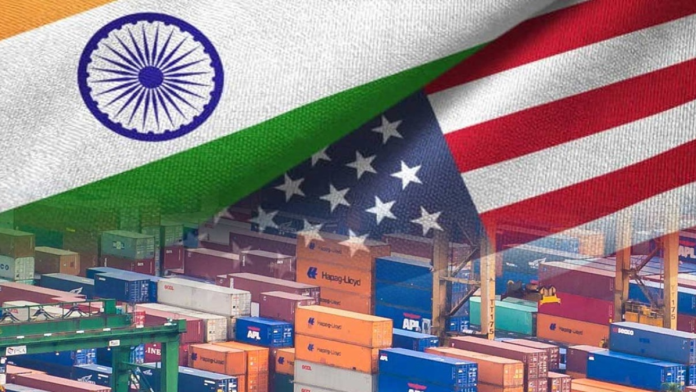Trade discussions between India and the United States are now in their last stages. Reports suggest that both countries may soon decide to reduce or remove several tariffs.
Today, India and the United States trade goods and services worth $191 billion. This is already one of the strongest economic partnerships in the world. But experts believe this number could rise even higher if barriers are lowered. Some estimates say the value of two-way trade may even double to $500 billion by 2030 if the tariff rollback takes place.
Tariffs and Their Impact on India–US Trade
Tariffs have been a key point in India–US trade talks for years. The United States raised duties on Indian steel in 2018 with a 25% tax, and India responded by increasing tariffs on several American goods. This back-and-forth made products more costly and created difficulties for exporters.
India exported over $77 billion worth of goods to the US last year and continued to maintain a trade surplus. This surplus is often discussed during negotiations, as it influences policy decisions on both sides.
The situation became tougher when additional duties linked to Russian oil were introduced. These charges were about 25%, rising to 50% for some products, increasing costs and complicating business planning.
Trump’s tariffs rollback targets cost-of-living crisis; coffee and cocoa prices expected to drop
India’s pharmaceutical and IT sectors remained strong but still felt the impact. Pharma exports to the US reached $8.7 billion, while the IT industry sent nearly $50 billion in services, even as it faced issues related to data rules and visa limits.
A reduction or removal of tariffs could lower costs and smoothen trade. With the agreement close to completion, industries are hopeful that years of uncertainty may soon come to an end.
Sectors Likely to See the Strongest Impact
The pharmaceutical sector is central to the talks, as India supplies a large share of the generic drugs used in the United States. Pharma companies also rely on APIs, which often face high taxes, so any cut in these duties could reduce production costs. Many major firms earn a significant portion of their revenue from the US market, making these tariff decisions important.
The IT services sector is another major area in the negotiations. While IT services are not directly hit by tariffs, the industry depends on clear digital rules and smooth visa processes. A digital-focused agreement could support work in cloud computing and AI. IT companies also import hardware like servers, and lower duties on these items would help reduce operating costs.
Other sectors such as textiles, telecom products, and machinery are also part of the discussions. These industries have continued stable export performance despite earlier tariff pressure, and a friendlier trade environment could help them manage costs and expand more effectively.
Why the Expected Deal Matters for Bilateral Trade
The India–US economic connection is one of the fastest-growing partnerships in the world. A tariff rollback would make it easier for companies to operate, reduce costs, and increase the movement of goods. The current trade value of $191 billion shows how strong the relationship already is. The possibility of reaching $500 billion by 2030 highlights how important the upcoming decision may be.
Officials have stated that most negotiation rounds are complete, and only a few points remain. India has already announced a ₹250 billion support plan to help exporters, including export guarantees and relief measures for major sectors. This shows how both sides are preparing for a more open trade structure.
As trade routes and global policies continue to shift, this agreement may become one of the biggest economic developments between the two countries. Businesses across sectors are watching closely as the final announcement is expected soon, marking a potential turning point in India–US trade relations.


